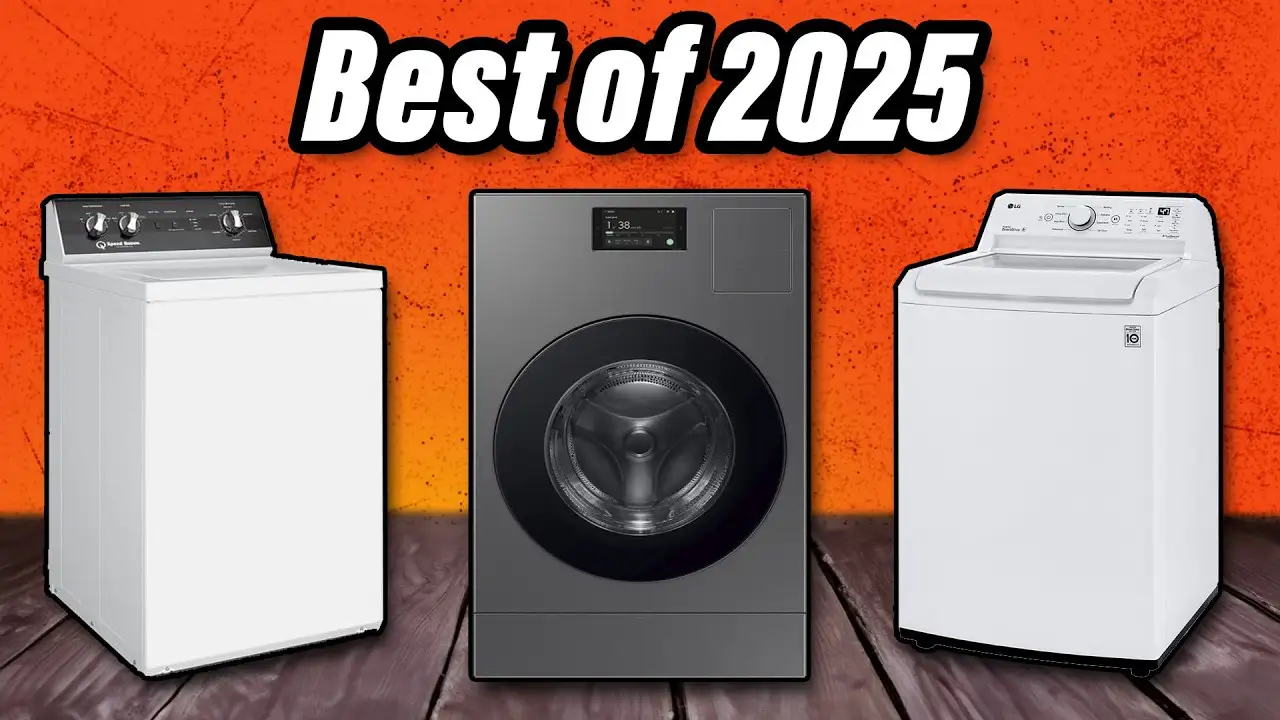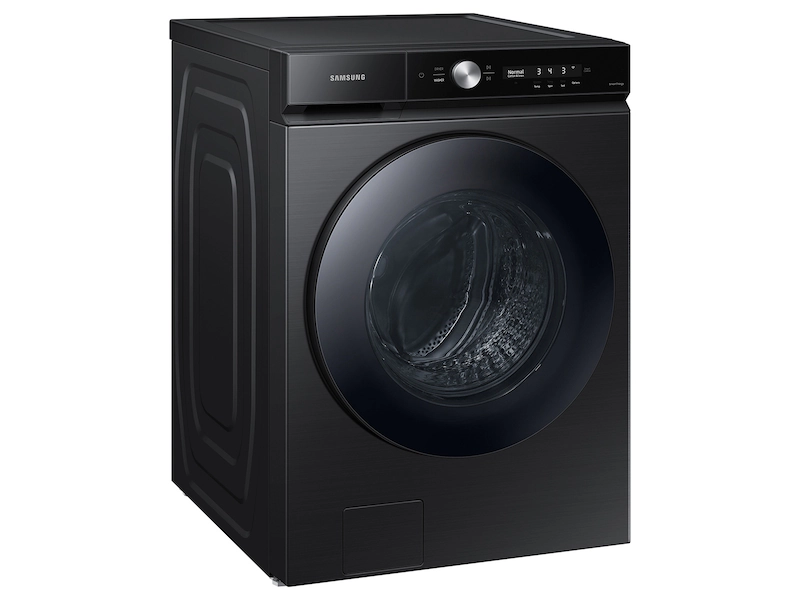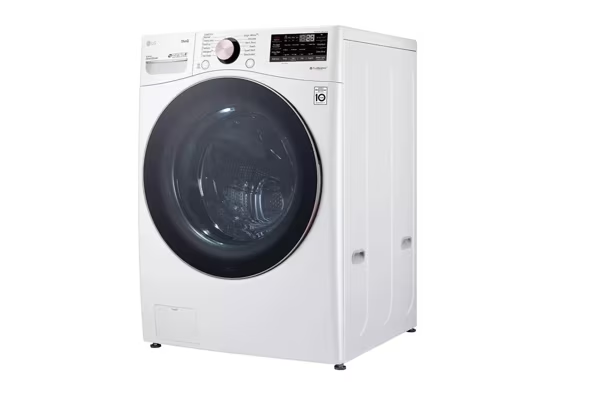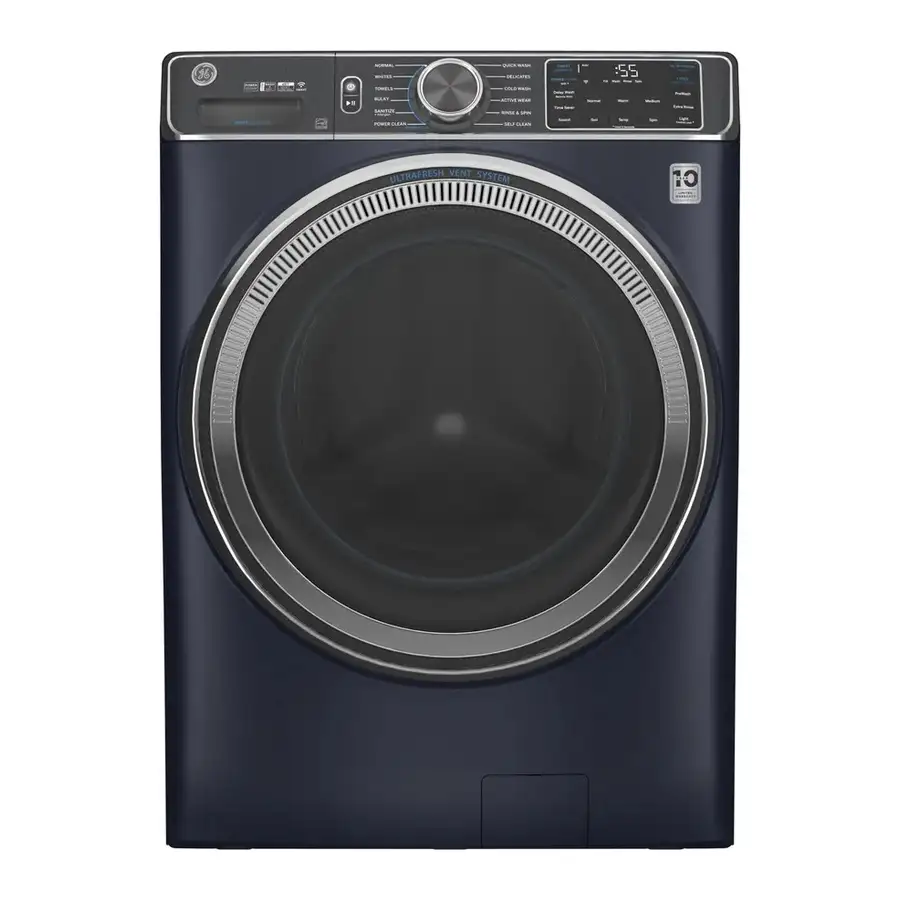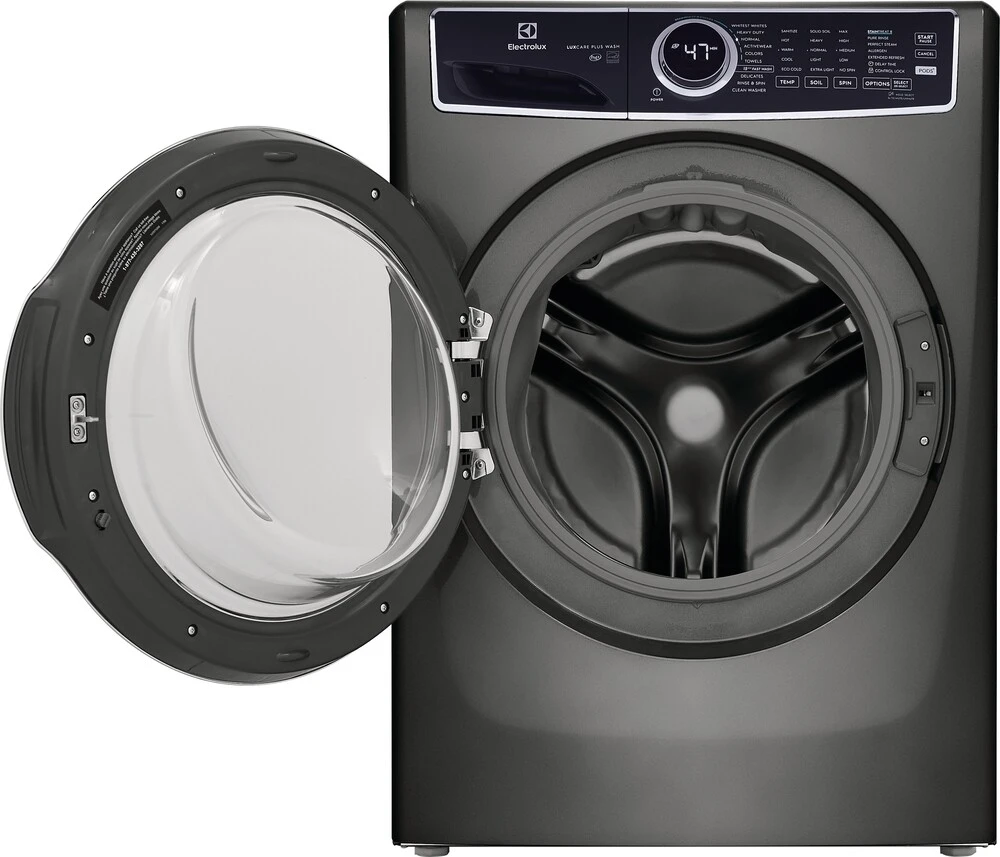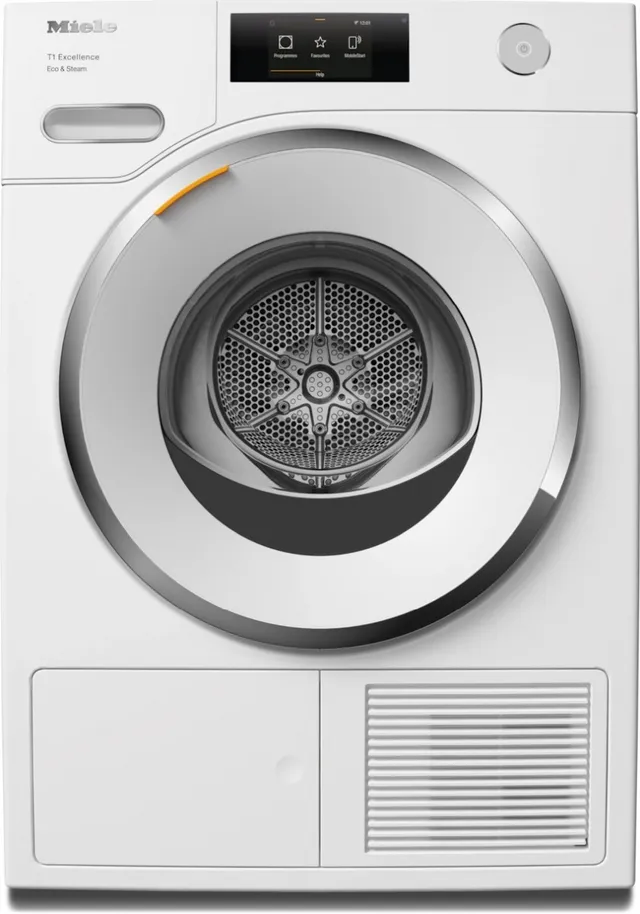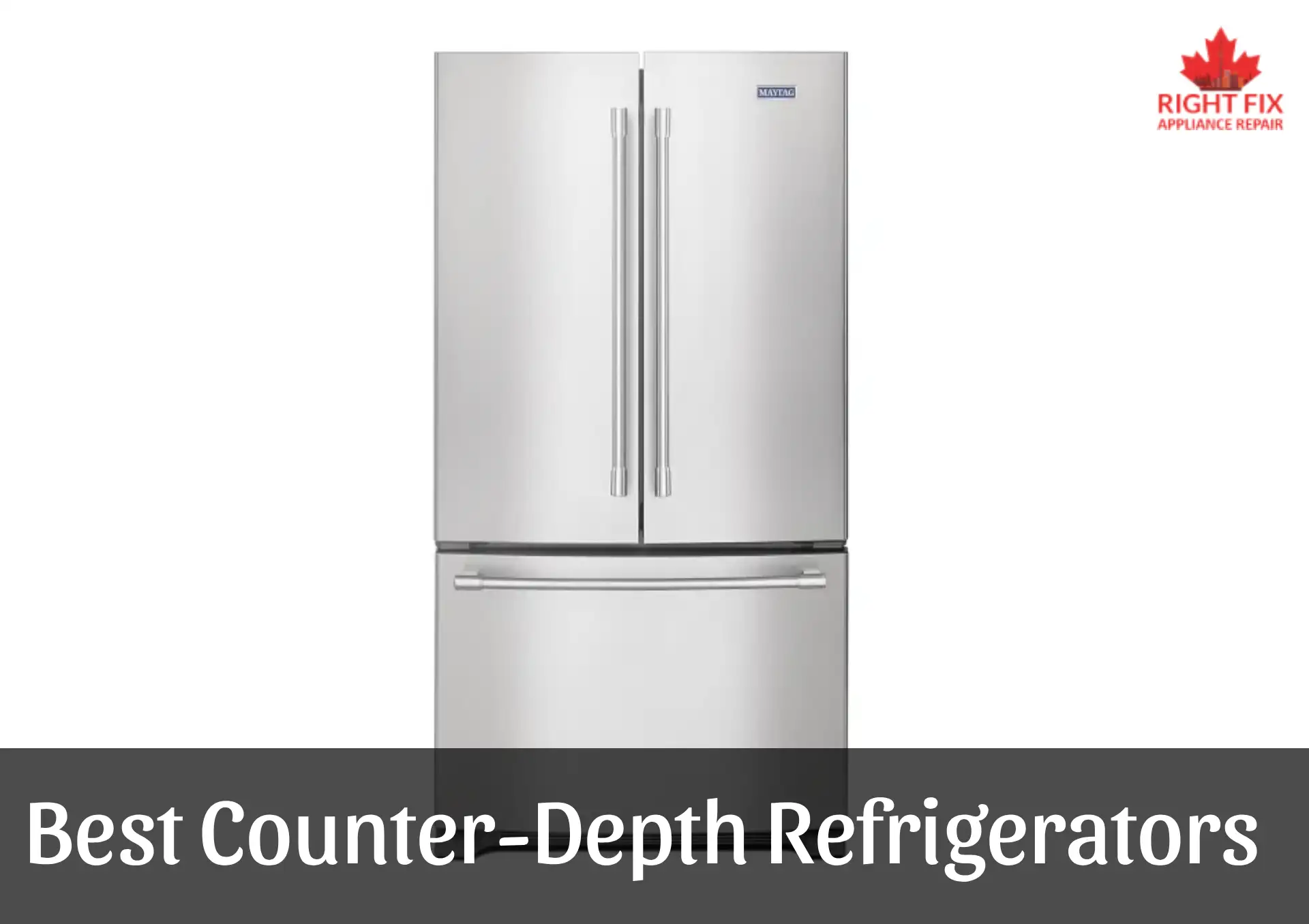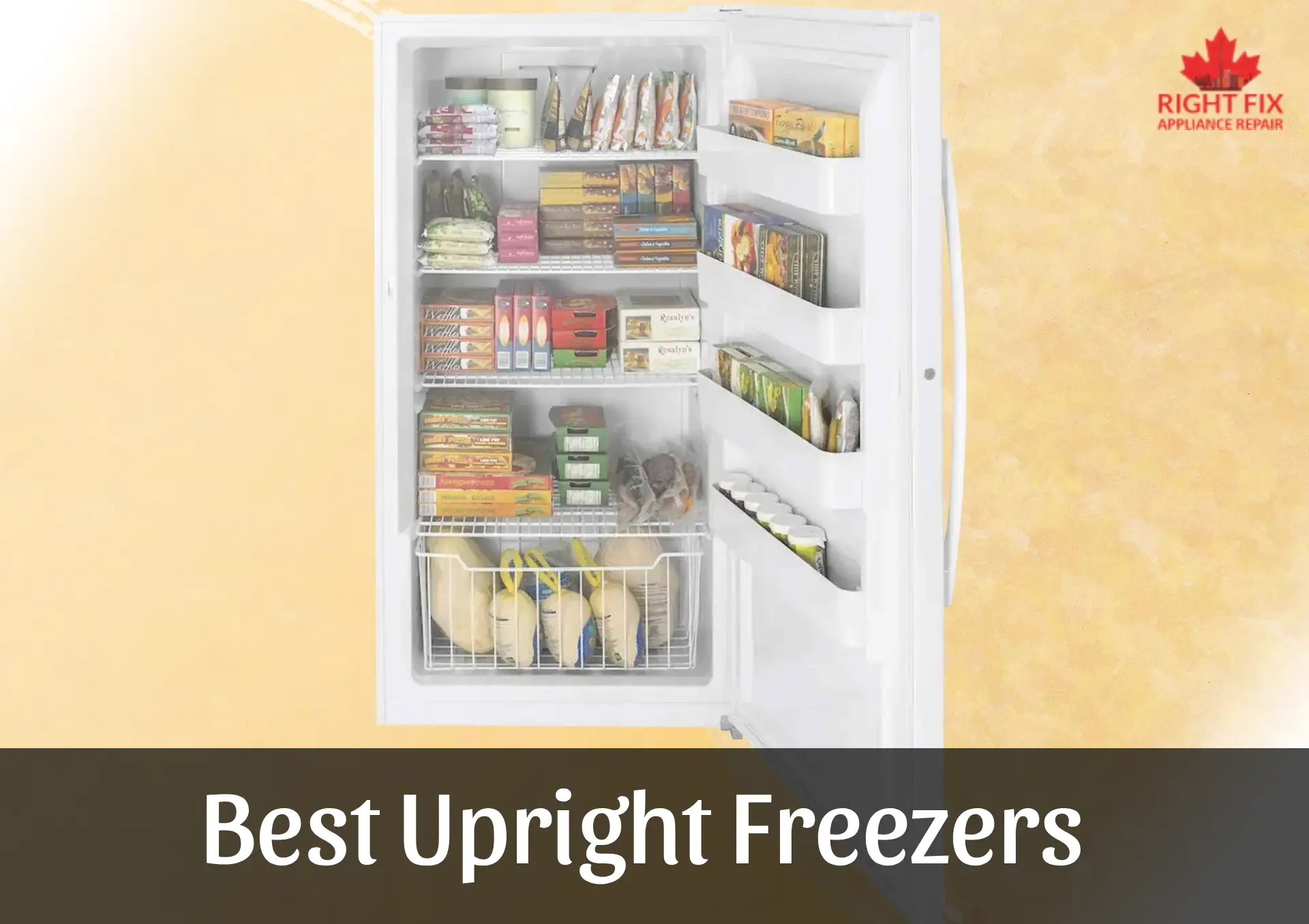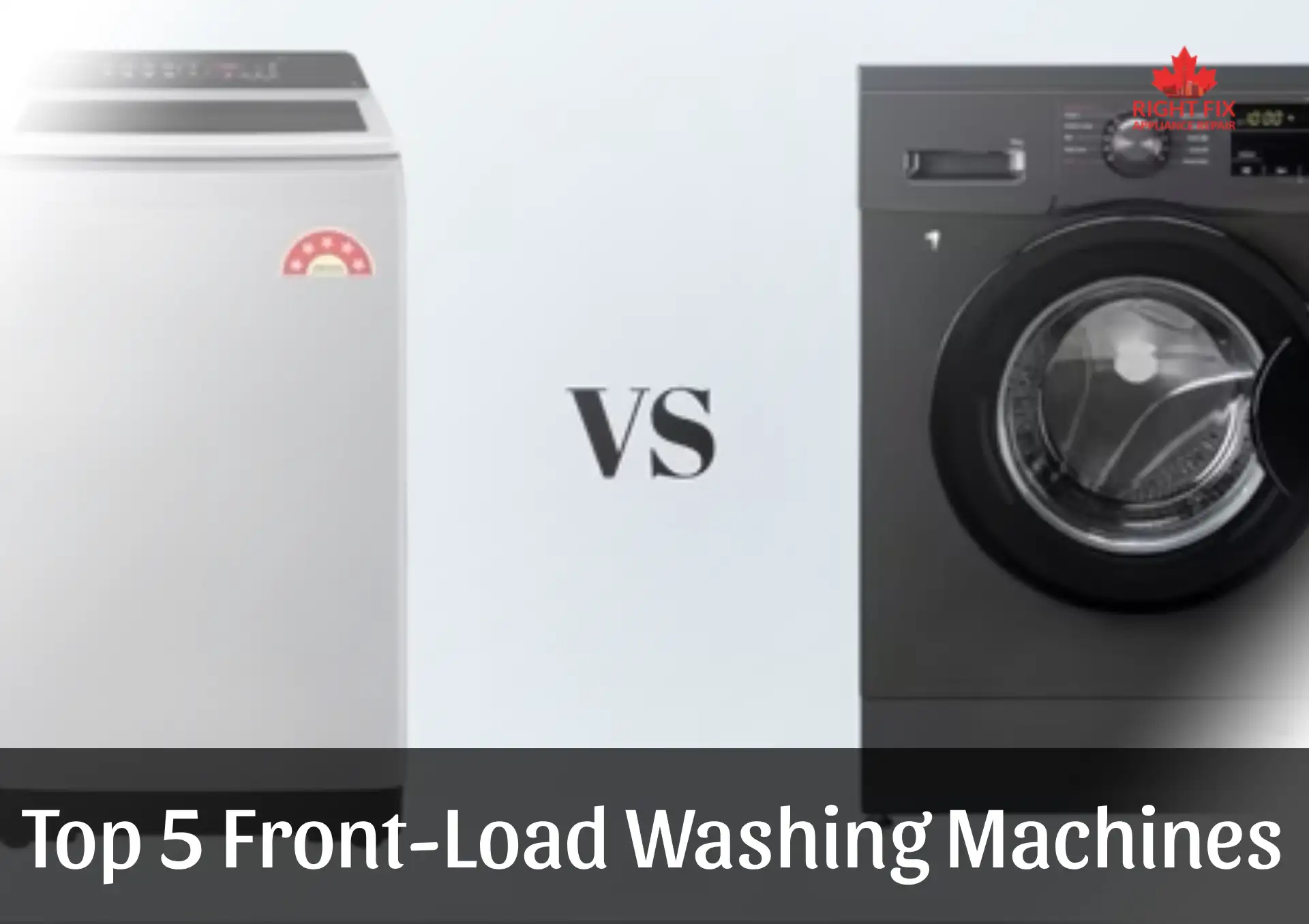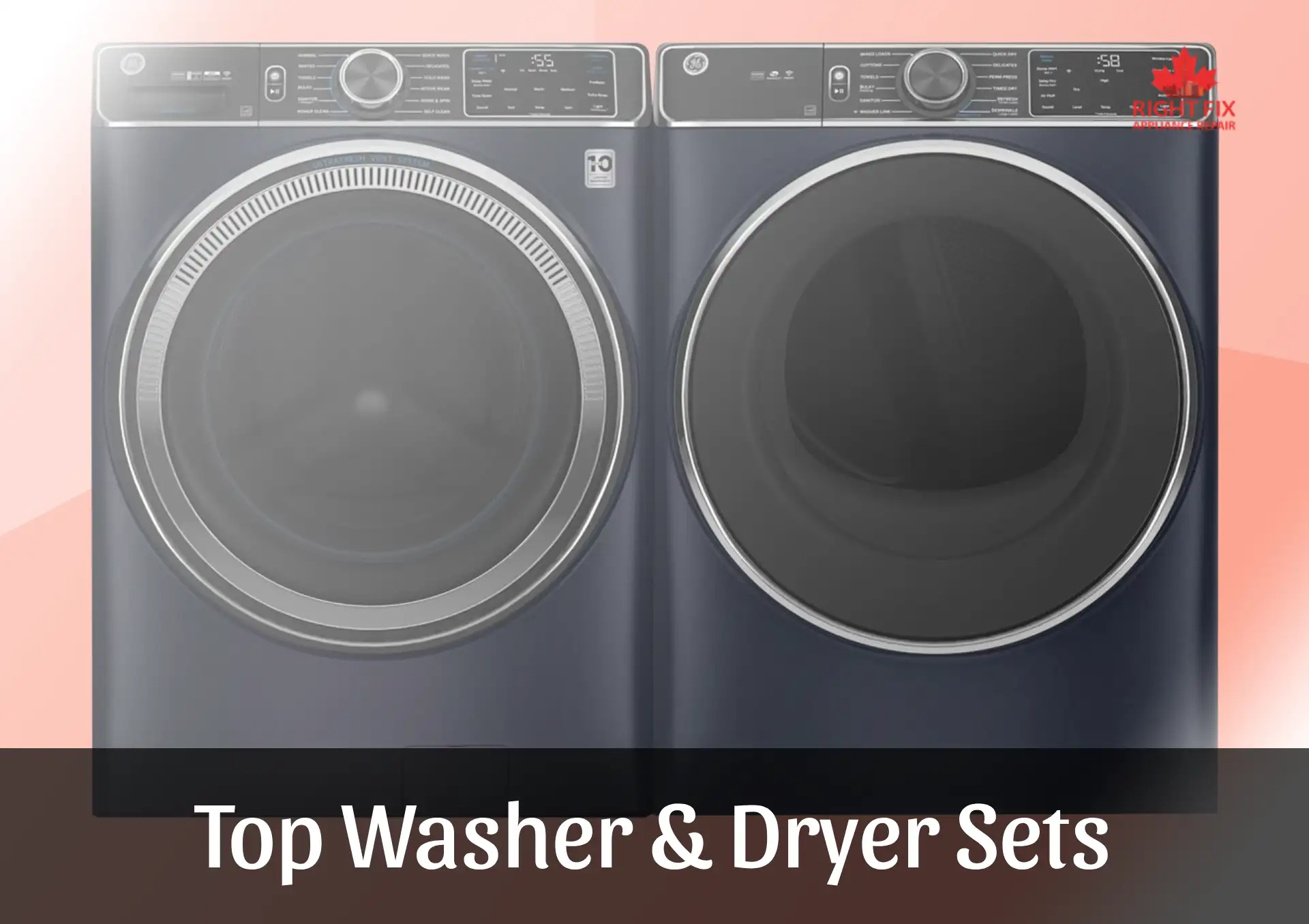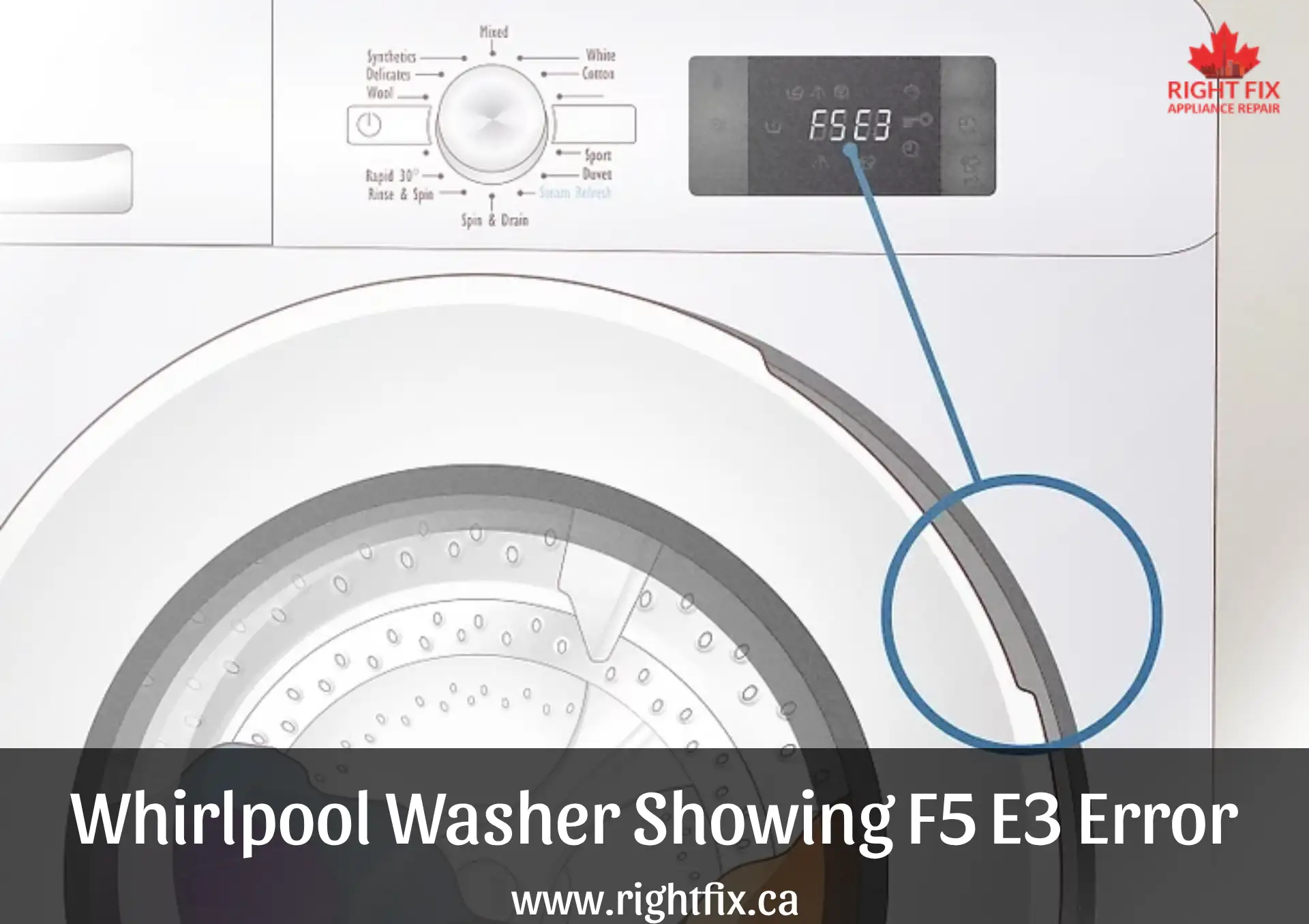Best Washing Machines: The 5 Models Worth Your Money in 2025
If your old washer squeaks, leaves towels soggy, or needs a ritual thump to start, it’s time. We narrowed the market to five standouts that balance cleaning power, fabric care, efficiency, reliability, and ease of use. You’ll see a mix of price points and sizes here—because not everyone needs a monster-capacity machine or a thousand smart features to get clean socks.
1) Samsung Bespoke WF53BB8700AV — Best Overall Smart Front-Loader (5.3 cu. ft.)
Samsung’s 5.3-cu.-ft. Bespoke front-loader is the all-rounder that makes laundry day feel less like a chore. It combines a huge drum with legitimately quick cycles (think weeknight-friendly), a clear interface, and strong stain removal for the price. The shallow “closet-depth” body helps if your laundry nook is tight, and the AI Smart Dial learns your routine so it puts your most used cycles front and center.
Why it’s great
-
Big capacity that still fits standard closets.
-
“Super Speed” options that cut cycle time without shredding fabrics.
-
Helpful app alerts and remote start for busy households.
Good to know: As with any front-loader, wipe the gasket and run a monthly tub clean. Two minutes of maintenance saves you from musty smells.
2) LG WM4000HWA — Best Value for Most Homes (4.5 cu. ft.)
Year after year, the WM4000HWA lands on shortlists because it just…works. TurboWash™ 360 sprays water directly into the drum to shorten cycles, while ColdWash® keeps energy use in check without compromising on stain removal. It’s quiet, quick, and large enough for a family’s weekly laundry without demanding a premium price.
Why it’s great
-
Fast everyday cycles with consistently clean results.
-
Proven reliability record and straightforward controls.
-
ThinQ app is there if you want it, easy to ignore if you don’t.
Good to know: Capacity is ample for most, but if you regularly wash king-size comforters, consider a 5.0+ cu. ft. model.
3) GE GFW850 Series (e.g., GFW850SPNRS/SSNWW) — Best Odor Control & Auto-Dispense (5.0 cu. ft.)
If you’ve been burned by front-loader odors before, GE’s UltraFresh Vent System is the headline feature. It helps dry the drum and door gasket between loads to reduce mildew funk. The Microban-treated components add another layer of protection. SmartDispense holds a large reservoir of detergent and automatically doses the right amount, so you avoid the too-sudsy, poorly rinsed mess that shortens fabric life.
Why it’s great
-
UltraFresh actively tackles the moisture that causes odors.
-
Auto-dispense keeps dosing consistent and economical.
-
Strong spin speed wrings out more water, cutting dryer time.
Good to know: Spend five minutes with the manual—there are a lot of features here, and using them correctly pays off.
4) Electrolux ELFW7537AT — Best for Stains & Fabric Care (5.2 cu. ft. IEC)
Electrolux puts fabric care first. Its LuxCare® Plus system improves drum movement, water temperature control, and load sensing to better protect clothing while attacking stains. Steam options help with set-in grime, and the Allergen cycle is a win for sensitive households. There’s also a true “fast wash” that actually feels fast when you need a quick refresh before a trip.
Why it’s great
-
Stain-focused cycles (with steam) that are gentle on fibers.
-
Excellent temperature control for detergents to do their job.
-
Allergen cycle for bedding and kids’ clothes.
Good to know: Like other front-loaders, airflow matters. Leave the door cracked between washes.
5) Miele W1 WXR860WCS — Best Premium Compact (24")
Short on space but not on standards? The W1 is the compact reference point. Miele’s TwinDos® auto-dispensing system nails dosing precision, while QuickIntenseWash delivers a surprisingly thorough clean in under an hour. Build quality is outstanding, vibration control is top-tier, and the machine is designed for the long haul—ideal for apartments, townhomes, and laundry closets where a full-size unit simply won’t fit.
Why it’s great
-
TwinDos ensures you never over- or under-soap again.
-
Compact footprint with full-size cleaning chops.
-
Premium construction and excellent balance at high spin.
Good to know: You’re paying for engineering and durability. If you have room for a full-size washer, weigh capacity needs before splurging.
How We Selected the Winners (Our Transparent Method)
We didn’t throw darts at a spec sheet. Each model earned its spot through a scoring framework built around how people actually use washing machines week in and week out:
-
Cleaning performance (30%) — We prioritized models with strong soil and stain removal across mixed-soil test loads. Heat management (for enzyme activation), drum action, and water distribution were key.
-
Fabric care (15%) — Clothes should look good after 50 washes, not just the first. We weighed gentleness of drum movement, availability of steam/sanitize without over-cooking fabrics, and rinse effectiveness to prevent detergent residue.
-
Efficiency & speed (15%) — ENERGY STAR listings are helpful, but we focused on real-world cycle times and spin-extraction (higher final RPM = shorter dryer time and lower utility bills).
-
Capacity & fit (10%) — Big drums are nice; sensible dimensions are nicer. We looked for closet-depth designs and compact options alongside full-size capacity.
-
Odor management (10%) — Front-loaders can collect moisture. Designs that improve airflow or gasket hygiene scored higher.
-
Ease of use & smart features (10%) — Clear dials, readable displays, intuitive cycle names, and smart features that solve actual problems (alerts, remote start, auto-diagnostics) got credit.
-
Reliability, parts, and serviceability (10%) — We gave preference to brands with stable parts availability, accessible pumps/filters, and strong owner-reported reliability.
-
Total cost of ownership (bonus) — Not just sticker price: detergent use, cycle length, likely repairs, and durability all factor into what you pay over time.
Shortlist candidates were compared on identical criteria and rescored after hands-on checks of controls, noise, vibration, and door/gasket build. Where two models tied, we favored the one that’s easier to live with (faster cycles, simpler UI, better spin-out, or stronger odor prevention). If you’re curious, yes—some excellent washers missed the cut because they were great at one thing but average at three others. Balance matters.
Buying Tips in 60 Seconds
-
Capacity match: 4.5 cu. ft. suits most families of 3–4. Jump to 5.0+ for bulky bedding or fewer loads.
-
Space check: Measure depth with hoses attached; “closet-depth” models are a lifesaver in tight installs.
-
Front vs. top: Front-loaders typically clean better and use less water; high-efficiency top-loaders are simpler to maintain and easier to load, but can be harsher on delicates.
-
Spin speed: Higher max RPM = drier clothes after the wash = faster, cheaper drying.
-
Detergent dosing: Auto-dispense reduces waste and keeps clothes feeling soft. If dosing manually, use less than you think—most people over-soap.
-
Noise & vibration: If your laundry is near living spaces, prioritize models with good balancing and a stable pedestal or solid floor.
Care Tips That Make Any Washer Last
-
Leave the door open for an hour after the last load to vent moisture.
-
Wipe the gasket and detergent drawer weekly; run a tub-clean cycle monthly.
-
Don’t overload—water and detergent must reach everything.
-
Use high-spin when fabrics allow; it saves time in the dryer and energy overall.
-
Clean the drain pump filter every few months (or sooner if you wash pet bedding).
Repair or Replace?
If your current washer is under 8 years old and the issue is a simple pump, belt, latch, or sensor, repair usually costs less than replacing. Chronic bearing noise, a cracked drum spider, or multiple electrical faults tip the scales toward a new machine. Keep your receipts: a surprising number of “dead” washers are revived by warranty parts plus a one-hour service call.
Quick Picks (Who Should Buy What)
-
“I want the best all-rounder with speed and smarts.” Samsung Bespoke WF53BB8700AV.
-
“Great cleaning, fair price, no drama.” LG WM4000HWA.
-
“Front-loader odors drove me nuts—never again.” GE GFW850 Series with UltraFresh.
-
“Lots of stains, sensitive skin in the house.” Electrolux ELFW7537AT.
-
“Small space, premium build.” Miele W1 WXR860WCS.
Final Word
There are plenty of decent washers, but only a handful deliver the right blend of cleaning, care, speed, and long-term value. Start with your space and capacity needs, then choose the model whose strengths match your laundry reality. If you’re still torn between two, pick the one with better spin extraction and simpler controls—you’ll feel the difference every laundry day.
Location we Service
- Ajax
- Alliston
- Aurora
- Bolton
- Bradford
- Brampton
- Brantford
- Burlington
- Caledon
- Cambridge
- Concord
- East York
- Etobicoke
- Georgetown
- GTA
- Guelph
- Halton Hills
- Hamilton
- Innisfil
- Keswick
- King City
- Kitchener
- Kleinburg
- Maple
- Markham
- Milton
- Mississauga
- New Tecumseth
- Newmarket
- North York
- Oakville
- Orangeville
- Oshawa
- Pickering
- Richmond Hill
- Scarborough
- Schomberg
- Stouffville
- Thornhill
- Toronto
- Unionville
- Uxbridge
- Vaughan
- Waterloo
- Whitby
- Woodbridge

